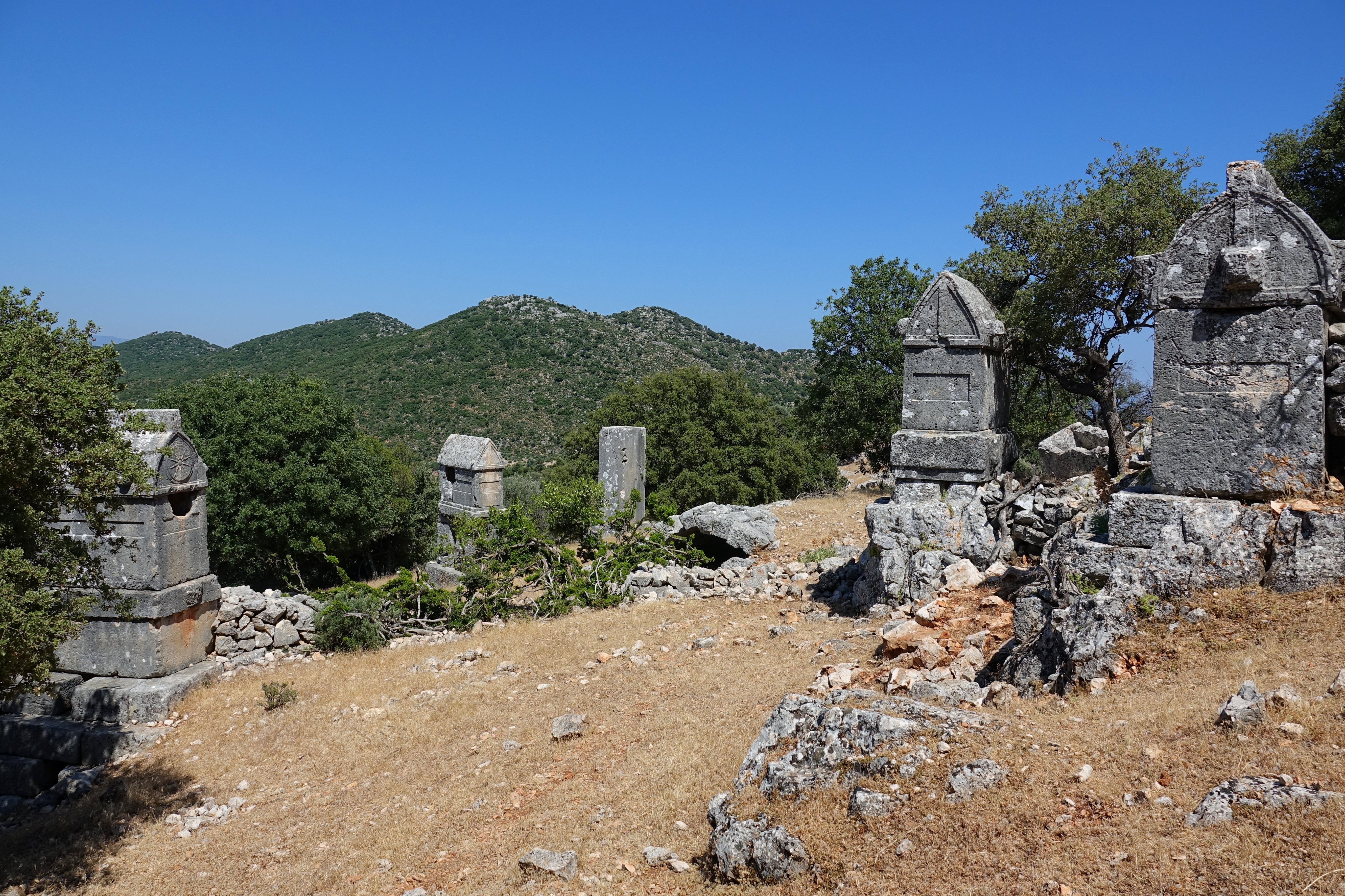Apollonia (Lycia) on:
[Wikipedia]
[Google]
[Amazon]

 Apollonia ( grc, Ἀπολλωνία) was a city in
Apollonia ( grc, Ἀπολλωνία) was a city in
The Princeton Encyclopedia of Classical Sites
Ancient Greek archaeological sites in Turkey Archaeological sites in Antalya Province Former populated places in Turkey Populated places in ancient Lycia Roman sites in Turkey {{Antalya-geo-stub

 Apollonia ( grc, Ἀπολλωνία) was a city in
Apollonia ( grc, Ἀπολλωνία) was a city in ancient Lycia
Lycia ( Lycian: 𐊗𐊕𐊐𐊎𐊆𐊖 ''Trm̃mis''; el, Λυκία, ; tr, Likya) was a state or nationality that flourished in Anatolia from 15–14th centuries BC (as Lukka) to 546 BC. It bordered the Mediterranean Sea in what is ...
. Its ruins are located near Kiliçli (Sıçak), a small village in the Kaş
Kaş (; el, Αντίφελλος, translit=Antífellos, translit-std=ISO) is a small fishing, diving, yachting and tourist town, and a district of Antalya Province of Turkey, 168 km west of the city of Antalya. As a tourist resort, it is re ...
district of Antalya Province
Antalya Province ( tr, ) is located on the Mediterranean coast of south-west Turkey, between the Taurus Mountains and the Mediterranean Sea.
Antalya Province is the centre of Turkey's tourism industry, attracting 30% of foreign tourists visit ...
, Turkey
Turkey ( tr, Türkiye ), officially the Republic of Türkiye ( tr, Türkiye Cumhuriyeti, links=no ), is a list of transcontinental countries, transcontinental country located mainly on the Anatolia, Anatolian Peninsula in Western Asia, with ...
.
History
The city isn't mentioned by any ancient author. Thepillar tomb A pillar tomb is a type of monumental grave wherein the central feature is a single, prominent Column, pillar or column, often made of stone.
Overview
A number of world cultures incorporated pillars into tomb structures. Examples of such edifices ...
s in the necropolis
A necropolis (plural necropolises, necropoles, necropoleis, necropoli) is a large, designed cemetery with elaborate tomb monuments. The name stems from the Ancient Greek ''nekropolis'', literally meaning "city of the dead".
The term usually im ...
to the north of the city attest to a Lycian origin of the settlement and date to about 500 BC.
In Roman
Roman or Romans most often refers to:
*Rome, the capital city of Italy
*Ancient Rome, Roman civilization from 8th century BC to 5th century AD
*Roman people, the people of ancient Rome
*''Epistle to the Romans'', shortened to ''Romans'', a letter ...
times the city was part of a local federation, a '' sympoliteia'', with Simena
Simena ( grc, Σίμηνα) was a town on the coast of ancient Lycia, 60 stadia from Aperlae. The ''Stadiasmus Maris Magni'' calls the town Somena (Σόμηνα).
Its site is located near Kaleköy, Turkey. Grave inscriptions and coin finds i ...
, Isinda and Aperlae
Aperlae or Aperlai ( grc, Ἄπερλαι, Aperlai) was an ancient city on the southern coast of ancient Lycia. It did not play any significant role in history or politics, yet its lifespan of 1,300 years is worth note.
The harsh local terrai ...
. Aperlae was the leader of the sympolity, which was represented in the Lycian League
Lycia ( Lycian: 𐊗𐊕𐊐𐊎𐊆𐊖 ''Trm̃mis''; el, Λυκία, ; tr, Likya) was a state or nationality that flourished in Anatolia from 15–14th centuries BC (as Lukka) to 546 BC. It bordered the Mediterranean Sea in what is t ...
with one vote.
The ruins of a Byzantine
The Byzantine Empire, also referred to as the Eastern Roman Empire or Byzantium, was the continuation of the Roman Empire primarily in its eastern provinces during Late Antiquity and the Middle Ages, when its capital city was Constantinopl ...
church possibly date to the 6th or 7th century AD, so the city was still occupied at that time.
Layout
The city is located on a hill and has a walledacropolis
An acropolis was the settlement of an upper part of an ancient Greek city, especially a citadel, and frequently a hill with precipitous sides, mainly chosen for purposes of defense. The term is typically used to refer to the Acropolis of Athens, ...
at its highest elevation. In the east the acropolis seems to be double because a much older stockade
A stockade is an enclosure of palisades and tall walls, made of logs placed side by side vertically, with the tops sharpened as a defensive wall.
Etymology
''Stockade'' is derived from the French word ''estocade''. The French word was derived ...
is located inside the Byzantine walls. Two churches, a theater
Theatre or theater is a collaborative form of performing art that uses live performers, usually actor, actors or actresses, to present the experience of a real or imagined event before a live audience in a specific place, often a stage. The p ...
, baths with cistern
A cistern (Middle English ', from Latin ', from ', "box", from Greek ', "basket") is a waterproof receptacle for holding liquids, usually water. Cisterns are often built to catch and store rainwater. Cisterns are distinguished from wells by t ...
s and a heroon are found on the western and northwestern side of the acropolis. Houses were built on the southwestern side. Six pillar tombs and one larger monument are found around the acropolis.
References
External links
The Princeton Encyclopedia of Classical Sites
Ancient Greek archaeological sites in Turkey Archaeological sites in Antalya Province Former populated places in Turkey Populated places in ancient Lycia Roman sites in Turkey {{Antalya-geo-stub